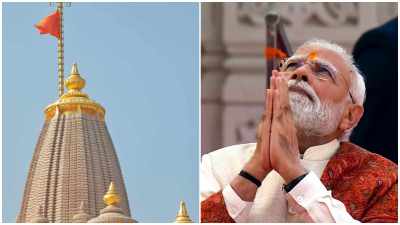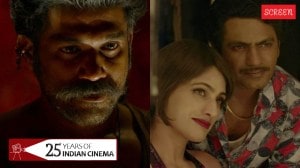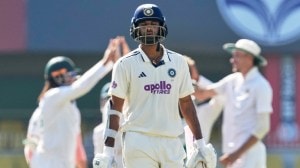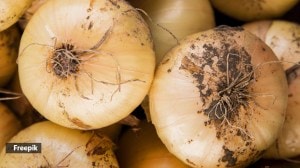They know what you will drink this summer
Its that time of the year for Coca-Cola and Pepsi. Their new summer ads are out. But do cola ads define cool as they used to 20 years back? A short and fizzy assessment of two decades of cola and culture
Its that time of the year for Coca-Cola and Pepsi. Their new summer ads are out. But do cola ads define cool as they used to 20 years back? A short and fizzy assessment of two decades of cola and culture
So,what are you going to drink this summer? The games have begun. Pepsi versus Coke,Ranbir Kapoor hard-selling Youngistaan and Imran Khan telling you to Open Happiness,celebs and wisecracks,spoof and counter-spoofall to ensure that when the sun is snarling down,the bottle of coloured fizzy water you pick is the right choice,baby. Aha.
Across the world,whenever cola wars take off,the result is crackling advertising. From the late 90s up till the early noughties,India was no different. The repartee between Pepsi and Coke,sometimes downright nasty,mostly funny,produced taglines and ads that are now the stuff of pop culture lore. Pepsis campaigns,specially,were street-smart and buzzed with youthful energy: from Dil maange more to Mera number kab aayega,the former even became the last war-cry of an Army captain in the Kargil war. But the bite has gone out of the cola campaigns. The cola wars have died down completely. I dont think they will come back again. Even if they do,it will just be for jest,not serious rivalry, says K V Sridhar,the national creative director of Leo Burnett.
Rohit Ohri,managing partner of JWT,the agency which handles Pepsis advertising in India,agrees. You can say,to a certain extent,the fun is gone. Today,the mindshare of a viewer gets eaten by too many brands and too many different kinds of brands. In cola advertising,there is no competition between us, he says.
Perhaps,the last iconic ad came in 2002 when Coke wanted to break into the semi-urban market. Aamir Khan as EveryIndian with a simple message: Thanda matlab Coca-Cola,a campaign that won a Gold Lion at the Cannes advertising awards in 2003. There was a huge semi-urban India we wanted to tap. We had to educate people about the brand. It was the introductory phase and we had to make the brand a synonym for a refresher. Thanda worked the best, says Prasoon Joshi,regional executive creative director,McCann Erickson,Asia Pacific.
To think that it all began in 1989 with a fashion disaster. Juhi Chawla in black anarkali suit,ghunghroos and a floppy hat,dancing her kathak twirls as Remo Fernandes,in baggy pants and oversized jacket,did his routine. It was gawky fusion,but the first international cola ad in India for Pepsi had fizz.
Two years later,it came up with a tagline that uncorked a generations taste for a cross-bred argot: Yehi hai right choice,baby,a direct translation of the jingle sung by Ray Charles for Diet Pepsi in America. We got the lingo and the culture right. When we came into the market,it was the first time that Hinglish was used in an advertisement. It was a new way to use two cultures. It was not like the audience had to make a choice of going too Western with the new drink, says Ohri.
Till 1977,Coca-Cola was Indias leading soft drink company. But when a new Janata Party-led government ordered it to turn over its secret formula and dilute its stake in its Indian unit,it shut shop. Twelve years later,Pepsi entered the market with a question,Are you ready for the magic?
But what you sipped back then was not Pepsi. It was Lehar-Pepsi. PepsiCo gained entry through a joint venture with a Punjab government-owned company. It was the first competition to Thums Up,the local macho brand that asked you to taste the thunder. By the time Coca-Cola returned in 1993,in the wake of the liberalisation policy,Pepsi had the first mover advantage. And the cola wars began.
When Coke got back,Pepsi already had a presence in the Indian market. So though it was competition,it was just a variable in the calculation. The ads were not aimed at making a point or aimed at Pepsi. Coke has its own position universally and it has been an inclusive brand, says Santosh Desai (of Future Brands) who was then heading McCann Ericksson.
Pepsi,on the other hand,has always been the challenger brand. Irreverence is in its DNA. It has always been a rebellious teenager,an anti-establishment sort of brand but when it came to India,there was nothing to fight against,there was no establishment, says Sridhar.
India saw that cheek during the 1996 Cricket World Cup. Pepsi had bid to be the official sponsor of the tournament and lost out. It had a whole kitty of best players from the subcontinent as endorsers. Its witty comeback? Nothing official about it. The message in the bottle: drink Coke and you are as good as an old fogey. When Coke became the official sponsors,Pepsi was out of the event. But we thought,how do we stake a claim to cricket? And we did that with the tagline. And turned the loss into a win, says Ohri.
The beverage giants have been trying to best each other since the 19th century. It began with two pharmacists in America,John Stith Pemberton,who in 1886 made the Coca-Cola formula,and Caleb Bradham,who came up with the Pepsi formula in the late 1890s.
Since then,the advertising,competitive pricing and marketing campaigns have been mutually targeted,all of which changed the rules of the game in American advertising. Coca-Cola used pictures of smartly-dressed young women to sell its beverages and one of these advertisements was made way back in 1895. Coca-Cola was the first commercial sponsor of the Olympic Games,at the 1928 games in Amsterdam. In the 1940s,Pepsi inducted a sales team entirely of African-Americans when segregation laws were still active in the US. But it was in 1975,when it introduced the Pepsi Challenge,a campaign where blindfolded men and women tested the rival flavours,that the scales tilted in Pepsis favour across America.
In India,the cola ads did more than define advertising. They stuck together the storyboard of a growing nation. From the coy Mahima Chowdhury in a salwar-kameez knocking on Aamir Khans door for a Pepsi to the fresh-faced Kalki Koechlin opening her bottle of happiness in a Coke ad,its a recap of two decades of change. If cricket and Bollywood were our twin pleasure points,it showed up on ads packed with star endorsers such as Aamir Khan and Sachin Tendulkar,Aishwarya Rai and Mahendra Singh Dhoni.
When Pepsi came into the market,we found the young people were under-confident. They were not sure of how much Western influence they could handle. The second big phase was when the youth really wanted more. The market had evolved and the youth wanted to try on new stuff. We are in the third phase. The youngsters are more confident of their own style and mettle. They really dont idolise stars so much as they themselves feel they can be stars. So we have Youngistaan Ka Wow,where they have the poise to take on any challenge, says Ohri.
Joshi agrees that the complex younger consumer who is trying to make up his mind poses a challenge. Today,the youth wants instant gratification. They want more energy and sense of change. They want to be gratified perpetually. We have a complex consumer on our hands. If you look at advertising,the telecom sector is right now spending huge amounts followed by the banking and the financial sector. The cola advertising hasn’t gone down,it is the other sectors that have gone up, he says.
And as far as the money goes,both Pepsi and Coke saw a very fruitful 2009,and are hopeful that this summer will bring in more good news for both. There is lot of space for both companies in the Indian market. The whole packaged beverage industry market is huge and can accommodate a lot of competitors, says Anand Singh,marketing director,colas,Coca-Cola India.
Back then,brand loyalty was a side order with every iconic hoarding and TV ad. Coke and Pepsi made people develop a bias. Their advertising made sure that only Pepsi was served in some restaurants. It started something we had never seen before. Small restaurants with Pepsi or Coke hoardings all over them,serving only one kind of beverage with the restaurants food. This forced brand loyalty wasn’t there in India before, says Kurnal Rawat of Grandmother India,a branding and communications firm based in Mumbai.
Its a rivalry that the ad-makers have invested in. I only have Coke, says Joshi. If someone offers me a drink,I ask them if it is Coke. If it isnt,I ask them to send it back. In any hotel room I stay at,I make sure there is Coke in the fridge. One can say it is childish but I love the brand, says Joshi. I remember once my son said he wasn’t going to talk to the new boy in school. Why? He said the boys father worked for Coke, says Ohri. It is understood that we even as a family only drink Pepsi.
The pesticide controversy,though,briefly brought the warring companies on the same side. The heads of both the companies got onto a common platform for a press conference in 2003. Advertising,too,had to respond to the crisis. We wanted to keep it simple,so we took Aamir Khan to a real Coke factory sipping a Coke, says Joshi. Pepsi did the same,it showed the then head of Pepsi,Rajiv Bakshi,in the factory,assuring the viewers. The attitude of the whole category was to lie low. What was needed was a softer approach. During the pesticide controversy,Pepsis irreverence took a beating, says Ohri.
Since then,the ad rivalry has died down. Now,the new categories of natural drinks and juices from the two companies are getting more attention in terms of advertising. Colas in India have not become uncool,other fruit juices and natural drinks have become cool. Just like earlier,whiskey and rum were favourites but now it is clearer drinks like vodka,and Red Bull that are popular. Clear and healthy drinks are now a popular choice. It is a changing attitude and many are migrating towards it, says Sridhar.
So the question really is: Coke or Pepsi or does dil maange more?



- 01
- 02
- 03
- 04
- 05




























